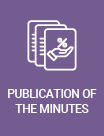Monetary Policy Report - January 2021
La Constitución Política de Colombia y el artículo 14 de la Ley 31 de 1992 asignan al Banco de la República la función de administrar las reservas internacionales. Las opiniones y posibles errores son responsabilidad exclusiva del autor y sus contenidos no comprometen al Banco de la República ni a su Junta Directiva.
Starting in October 2019, the quarterly Inflation Report produced by the technical staff of the Central Bank will be known as the Monetary Policy Report. The document, which is used for the technical staff´s monetary policy recommendation, will be published on the working day after the meeting of the BDBR in January, April, July, and October, simultaneously with the Board minutes.
1.1 Macroeconomic Summary [Pág. 1]
Overall inflation (1.61%) and core inflation (excluding food and regulated items) (1.11%) both declined beyond the technical staff’s expectations in the fourth quarter of 2020. Year-end 2021 forecasts for both indicators were revised downward to 2.3% and 2.1%, respectively. Market inflation expectations also fell over this period and suggested inflation below the 3% target through the end of this year, rising to the target in 2022. Downward pressure on inflation was more significant in the fourth quarter than previously projected, indicating weak demand. Annual deceleration among the main groups of the consumer price index (CPI) was generalized and, except for foods, was greater than projected in the October report. The CPI for goods (excluding foods and regulated items) and the CPI for regulated items were subject to the largest decelerations and forecasting discrepancies. In the first case, this was due in part to a greater-than-expected effect on prices from the government’s “VAT-fee day” amid weak demand, and from the extension of some price relief measures. For regulated items, the deceleration was caused in part by unanticipated declines in some utility prices. Annual change in the CPI for services continued to decline as a result of the performance of those services that were not subject to price relief measures, in particular. Although some of the overall decline in inflation is expected to be temporary and reverse course in the second quarter of 2021, various sources of downward pressure on inflation have become more acute and will likely remain into next year. These include ample excesses in capacity, as suggested by the continued and greater-than-expected deceleration in core inflation indicators and in the CPI for services excluding price relief measures. This dynamic is also suggested by the minimal transmission of accumulated depreciation of the peso on domestic prices. Although excess capacity should fall in 2021, the decline will likely be slower than projected in the October report amid additional restrictions on mobility due to a recent acceleration of growth in COVID-19 cases. An additional factor is that low inflation registered at the end of 2020 will likely be reflected in low price adjustments on certain indexed services with significant weight in the CPI, including real estate rentals and some utilities. These factors should keep inflation below the target and lower than estimates from the previous report on the forecast horizon. Inflation is expected to continue to decline to levels near 1% in March, later increasing to 2.3% at the end of 2021 and 2.7% at year-end 2022 (Graph 1.1). According to the Bank’s most recent survey, market analysts expect inflation of 2.7% and 3.1% in December 2021 and 2022, respectively. Expected inflation derived from government bonds was 2% for year-end 2021, while expected inflation based on bonds one year forward from that date (FBEI 1-1 2022) was 3.2%.














.png)

































